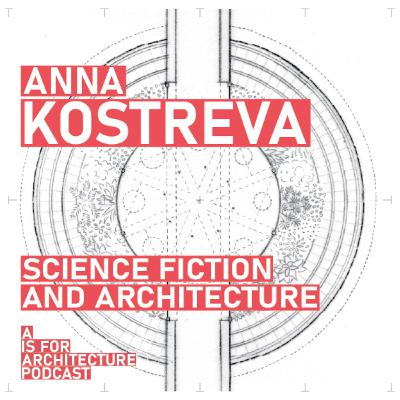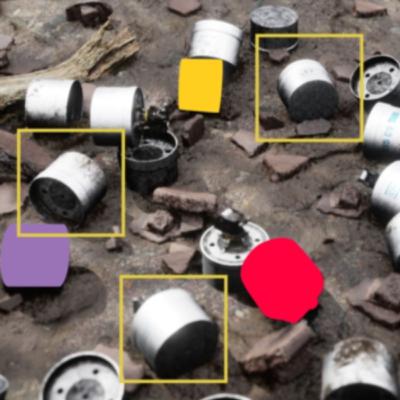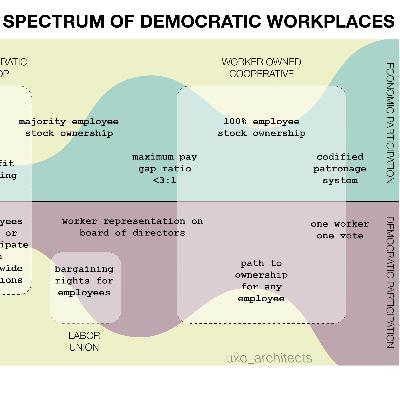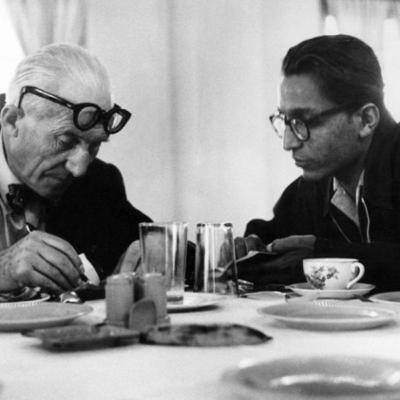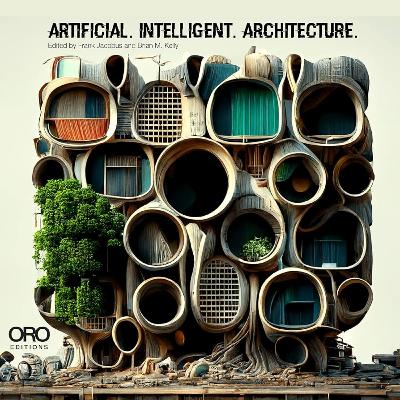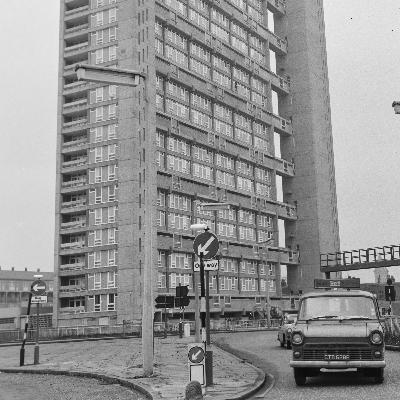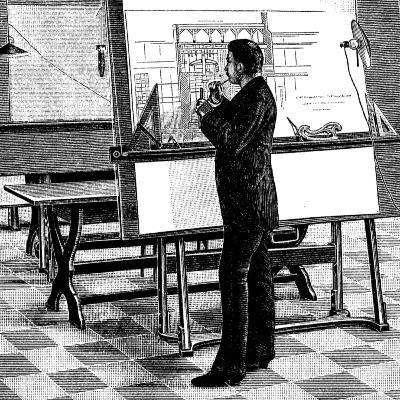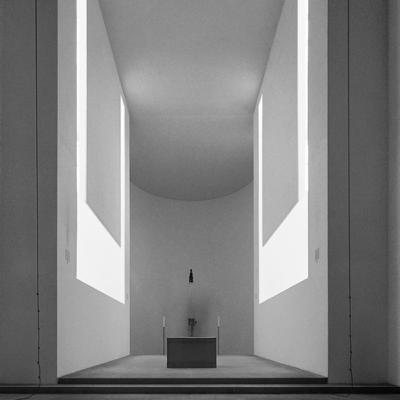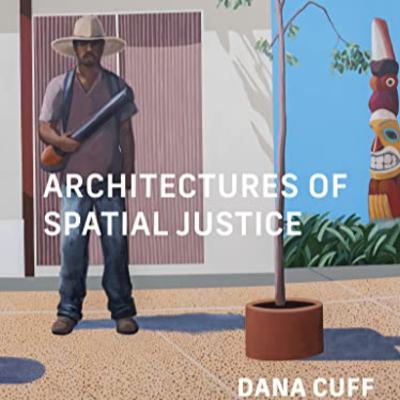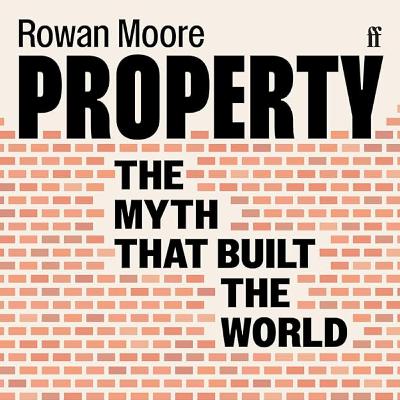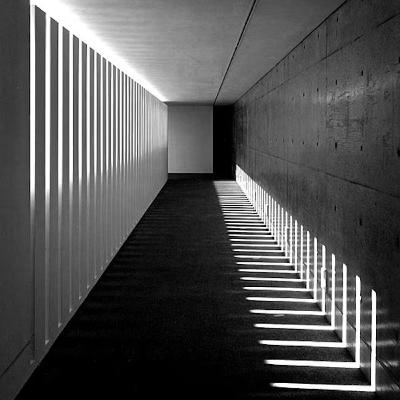Discover A is for Architecture Podcast
A is for Architecture Podcast

A is for Architecture Podcast
Author: Ambrose Gillick
Subscribed: 133Played: 2,169Subscribe
Share
© Ambrose Gillick
Description
Explore the world of architecture with the A is for Architecture Podcast hosted by Ambrose Gillick. Through conversations with industry experts, scholars and practitioners, the podcast unpacks the creative and theoretical dimensions of architecture. Whether you're a professional, student, or design enthusiast, the A is for Architecture Podcast offers marvelous insights into how buildings shape society and society shapes buildings.
This podcast is not affiliated in the slightest with Ambrose's place of works. All opinions expressed by him are his alone, obvs.
This podcast is not affiliated in the slightest with Ambrose's place of works. All opinions expressed by him are his alone, obvs.
184 Episodes
Reverse
For this week’s episode of the A is for Architecture Podcast, I spoke to Berlin-based writer, architect and activist Anna Kostreva who, with Alex Head, leads Plural Studio, ‘a studio for critical inquiry, publishing and architectural design’. We met to talk about Anna’s novel, Seeing Fire | Seeing Meadows, which she published in 2023.Seeing Fire | Seeing Meadows uses architecture – and an architect narrator - as a way to explore the growing digitisation of everyday urban and spatial life. We talk about this, about the book’s imperative but also about writing, [science] fiction and drawing as a routes to a sort-of triangulated and more shrewd understanding of the world around us.Seeing Fire is linked above. Anna can be found at Plural Studio here, on Instagram here and on LinkedIn here.Have a listen: see things differently.+Music credits: Bruno Gillick
In this, the 100th episode of A is for Architecture and the thirty-something in Series 3, Matthew Fuller speaks about his and Eyal Weizman’s 2021 book, Investigative Aesthetics: Conflicts and Commons in the Politics of Truth, published with Verso, which ‘draws on theories of knowledge, ecology and technology [to evaluate] the methods of citizen counter-forensics, micro-history and art […] an inspiring introduction to a new field that brings together investigation and aesthetics to change how we understand and confront power today.’
Matthew is Professor of Cultural Studies at Goldsmiths, University of London, and has written many books and papers, which you can find out about via his professional profile. Otherwise, I find little trace of him online…
Thanks for listening.
+
Music credits: Bruno Gillick
Episode n/3 of A is for Architecture is a conversation with Ashton Hamm, founding principal of uxo architects, a cooperative practice based in California, USA. Building on some themes and ideas in Ashton’s recent book, Practice Practice (Oro Editions 2023), we discuss the what, why, where and how of cooperative, worker-owned practice. This is an American tale, of course, because each cooperative is a formal, legal structure and so depends on contextual legal protocols, but it is an illustrative and inspiring tale too, which indicates another possible way of being architect.
You can find UXO on Instagram here. The book is here. Have a cheeky and a purchase and side with the good guys.
Thanks for listening.
+
Music credits: Bruno Gillick
Episode 30ish/3 of A is for Architecture is a conversation with Catherine Ingraham, writer and scholar, about Architecture’s Theory, part of MIT Press’ Writing Architecture Series. As the publisher’s spiel has it, ‘architecture as a thinking profession materializes theory in the form of built work that always carries symbolic loads’. But can there even be architecture without theory?
Catherine is a professor in the department of Graduate Architecture and Urban Design at the Pratt Institute, New York, where she was Chair of Graduate Architecture, between 1999-2005. Other significant written works by her include Architecture, Animal, Human: The Asymmetrical Condition (Routledge 2006) and Architecture and the Burdens of Linearity (Yale University Press 1998). From 1991 to 1998, with Michael Hays and Alicia Kennedy, Catherine edited Assemblage: A Critical Journal of Architecture and Design Culture.
Heavy stuff indeed. Thanks for listening.
+
Music credits: Bruno Gillick
Episode 29/3 of A is for Architecture is a conversation with Professor Neelkanth Chhaya, architect and scholar, and former Dean of the Faculty of Architecture, CEPT, Ahmadabad, Gujarat. We discuss India, notions of modernism (and postmodernism) in postcolonial contexts, indigeneity and identity, and the meaning of the/ a ‘vernacular’ in a globalising culture, as well as time, language, poetry, food and parampara…
We also talk about Balkrishna Doshi, and you can hear/ watch Chhaya speak about him and his work as part of a fascinating panel discussion – "Suppose We Don't Talk About Architecture" - An Homage to Doshi – produced by the Bengal Institute in 2023, and also featuring former podcast guest, Juhani Pallasmaa. Chhaya was named the inaugural recipient of the ‘Balkrishna Doshi: Guru Ratna Award 2023’, for his contribution to education, innovation, and mentorship.
I broke bread with Chhaya one night in Ahmedabad. He was amazing then, and he remains so now. Have a listen, find out for yourself, on all good podcast platforms.
Thanks for listening.
+
Music credits: Bruno Gillick
In Episode 28/3 of A is for Architecture, architect, curator and educator Laurence Lord speaks about his practice AP+E, which he founded with Jeffrey Bolhuis, and their civically-minded work in Ireland and Holland, his work at the 2023 Venice Biennial’s The Laboratory of the Future show, as Assistant to the Curator, Exhibition Design, and lecturer at Queen’s University Belfast.
Laurence can be found at the AP+E website, at QUB, on LinkedIn, X/ Twitter and Instagram.
Find it where the beautiful people listen to such things, and also those places they would really rather not.
Thanks for listening.
+
Music credits: Bruno Gillick
In Episode 27, Series 3 of A is for Architecture, Frank Jacobus and Brian M Kelly discuss their recent book, Artificial Intelligent Architecture: New Paradigms in Architectural Practice and Production, published by ORO Editions in 2023.
The book discusses the ‘impact of artificial intelligence in the discipline of architecture [through the] mass adoption of highly accessible machine learning tools [which has] allowed designers to test their limits and assess their role as an author in the design of the built environment.’ The book features essays from eighteen architects and designers that theorize and test the possibilities of AI, and its meaning and impacts as ‘ideation device and extension of the architect’s authorship.’
Frank is Department Head and Professor of Architecture and the Stuckeman Chair of Integrative Design, Penn State College of Arts and Architecture, the principal of SILO AR+D with Marc Manack, and can be sought out on Instagram. Brian is Associate Professor of Architecture at the University of Nebraska-Lincoln, and is on LinkedIn.
Available where good podcasts roam.
Thanks for listening.
+
Music credits: Bruno Gillick
In Episode 26/ 3 of A is for Architecture, Loretta Lees and Elanor Warwick speak about their book, Defensible Space on the Move: Mobilisation in English Housing Policy and Practice, published with Wiley in 2022. We discuss a few of its themes, including the emergence of the concept in America with Oscar Newman and others, its transference to Britain and its articulation and deployment by geographers, architects and policymakers, not least Alice Coleman, in the later twentieth century.
The book tells ‘the history of defensible space from the 1970s work of Oscar Newman on New York City public housing projects to Alice Coleman’s work in English boroughs and estates [using] oral histories and in-depth interviews with key figures alongside extensive archival research to examine the movement/mobility/mobilization of defensible space across the Atlantic as well as across, in and through academic, professional and governmental circles in the UK.’
Loretta is Professor & Faculty Director of the Initiative on Cities at Boston University, and is also on X. Elanor is Head of Strategic Policy and Research at Clarion Housing Group, and is on LinkedIn and X.
Available on all good podcast platforms.
Thanks for listening.
+
Music credits: Bruno Gillick
Series 3, Episode 25 of A is for Architecture’s is a conversation with social and architectural historian, Ken Worpole, discussing his life and work, and focusing on the new edition of his book Modern Hospice Design: The Architecture of Palliative and Social Care, published by Routledge this year. As the gloss puts it, ‘At its core [the book is] a public discussion of a philosophy of design for providing care for the elderly and the vulnerable, taking the importance of architectural aesthetics, the use of quality materials, the porousness of design to the wider world, and the integration of indoor and outdoor spaces as part of the overall care environment.’ We talk about all this, and the place hospices play in the urban and ethical fabric of contemporary urban life.
Ken’s personal website is here, and you can find links to his other works there, including the important New Jerusalem: The Good City and the Good Society (2017, The Swedenborg Society). Along with the landscape photographer Jason Orton, he also writes the online journal, The New English Landscape (also a book), documenting ‘the changing landscape and coastline of Essex and East Anglia, particularly its estuaries, islands and urban edgelands’.
Available on all good podcast platforms.
Thanks for listening.
+
Music credits: Bruno Gillick
Episode 23/3 of A is for Architecture is a conversation with Mark Jarzombek about his recent book, Architecture Constructed: Notes on a Discipline, published by Bloomsbury in 2023. The book presents ‘the long-suppressed conflict between […] between those who design, and those who build. [Jarzombek] reveals architecture to be a troubled, interconnected realm, incomplete and unstable, where labor, craft, and occupation are the 'invisible' complements to the work of the architect [and] pushes the boundaries on how we define the professional discipline of architecture’.
Mark Jarzombek is Professor of the History and Theory of Architecture, MIT. He Instagrams and LinkedIns.
Available on Spotify, iTunes, Google Podcasts, Amazon Music and YouTube.
Thanks for listening.
+
Music credits: Bruno Gillick
In Episode 22 of Series 3 of A is for Architecture, architectural historian, Swati Chattopadhyay discusses her 2023 book, Small Spaces: Recasting the Architecture of Empire, published by Bloomsbury. ‘With the focus of history so often on the large scale - global trade networks, vast regions, and architectures of power and domination - Small Spaces shows instead how we need to rethink this aura of magnitude so that our reading is not beholden such imperialist optics [and] is a must-read for anyone wishing to decolonize disciplinary practices in the field of architectural, urban, and colonial history.’
Swati is Professor in the Department of History of Art and Architecture, University of California, Santa Barbara and can be found professionally there.
Available on Spotify, iTunes, Google Podcasts, Amazon Music and YouTube.
Thanks for listening.
+
Music credits: Bruno Gillick
In Episode 21/3 of A is for Architecture, filmmaker and architectural photographer Jim Stephenson discusses his work, his method and his inspirations. Jim and Sofia Smith are currently exhibiting their work ‘The Architect has Left the Building’ at The Farrell Centre, Newcastle – an immersive film installation that explores ‘how people use buildings and spaces once the architect‘s work has finished’.
Jim can be found on Instagram as clickclickjim. His personal website is here.
Available on Spotify, iTunes, Google Podcasts and Amazon Music.
Thanks for listening.
+
Music credits: Bruno Gillick
Episode 20, Series 3 of A is for Architecture, is a discussion with Katie Lloyd Thomas, Professor of Architectural History and Theory at Newcastle University, about her 2021 book, Building Materials: Material Theory and the Architectural Specification, published by Bloomsbury. The book ‘offers a radical rethink of how materials, as they are constituted in architectural practice, are themselves constructed and […] uncovers [in the construction specification] a vast and neglected resource of architectural writing’.
Katie can be found professionally here, and socially here. The Production Studies 2024 conference can be found here, and is still open for attendees.
Available on Spotify, iTunes, Google Podcasts and Amazon Music.
Thanks for listening.
+ + + + + + + + + + + + + + +
Music credits: Bruno Gillick
+ + + + + + + + + + + + + + +
In Episode 19/3 of A is for Architecture, John Pawson speaks about his design education, work, ethos and practice. John is recognised as the preeminent minimalist architect of the age, with work including Calvin Klein shops, St John at Hackney Church (2020), the Abbey of Our Lady of Nový Dvůr, Czech Republic (2004) the Moritzkirche, Augsburg (2013) and the Sackler Crossing at Kew (2006). Last year, a new book was published on John’s work – John Pawson: Making Life Simpler, published by Phaidon, and written by Deyan Sudjic. His 1996 book, Minimum, was something like a phenomenon.
You can find John on Instagram, and on his practice website.
Available on Spotify, iTunes, Google Podcasts, Amazon Music, YouTube and Facebook .
Thanks for listening.
+ + + + + + + + + + + + + + +
Music credits: Bruno Gillick
+ + + + + + + + + + + + + + +
In Season 3, Episode 18 of A is for Architecture Dana Cuff speaks about her recent book, Architectures of Spatial Justice, published by MIT Press last year. Dana is Professor of Architecture and Urban Design, and founding director of cityLAB, both at the University of California, Los Angeles.
Architectures of Spatial Justice ‘examines ethically driven practices that break with professional conventions to correct long-standing inequities in the built environment, uncovering architecture's limits—and its potential.’ The book builds on Dana’s founding of cityLAB in 2006, ‘a research and design center that initiates experimental projects to explore metropolitan possibilities’ and which ‘leverages design, research, policy, and education to create more just urban futures with real impacts for communities in Los Angeles and beyond’, including through coLAB, and in partnership with community organisations.
Dana also founded and runs UCLA’s Urban Humanities Initiative which offers students from ‘architecture, urban studies, and the humanities a radical platform for crossdisciplinary, impactful, urban scholarship and action’, and which she wrote about in Urban Humanities: New Practices for Reimagining the City (MIT Press, 2020).
You can find some of Dana’s various books via the hyperlinks in the text above, all via the MIT Press website. Dana can be found here on the UCLA site, and here on X/ Twitter. cityLAB can be gotten on Instagram here. There’s a good piece by Dana – ‘Why would architects let themselves be so vitiated?’ on Dezeen, laying into The Line here.
Available on Spotify, iTunes, Google Podcasts, YouTube and Amazon Music.
Thanks for listening.
+ + + + + + + + + + + + + + +
Music credits: Bruno Gillick
+ + + + + + + + + + + + + + +
Episode 17/3 of A is for Architecture, is a conversation with Rob Fiehn, writer, communications consultant, Director of the London Society and Chair of the Museum of Architecture, about the London Society’s 2023 London of the Future book, a collection of essays by experts from various disciplines – ‘engineering, urbanism, architecture, manufacturing, futurology, journalism and more’ – speculating on ‘how the metropolis might be governed, organized and designed in the years to come.’
London of the Future is a plush publication, as you would expect, full of smart ideas and lovely images. It follows 102 years on from the London Society’s original publication of the same name when, ‘under the editorship of the architect Sir Aston Webb [it] published a collection of essays […] some rather more futuristic than others.’ (Gilbert, D. (2004). London of the Future: The Metropolis Reimagined after the Great War. Journal of British Studies).
2023’s edition is futuristic indeed, but not sci-fi. There are ideas that, without too much effort - or perhaps not any effort at all - may well come to pass.
You can find the book on Merrell’s website here, and on the London Society website here. Rob professional alter ego is here, and he is on X here, LinkedIn here and Instagram too.
Available on Spotify, iTunes, Google Podcasts and Amazon
Music.
Thanks for listening.
+ + + + + + + + + + + + + + +
Music credits: Bruno Gillick
+ + + + + + + + + + + + + + +
aisforarchitecture.org
Apple: podcasts.apple.com
Spotify: open.spotify.com
Google: podcasts.google.com
Amazon: music.amazon.co.uk
YouTube: youtube/channel
In Episode 16/3 of A is for Architecture, I spoke with the architect Petra Marko, director of Marko & Placemakers, creative director of visual communication company Milk and now Director of the Metropolitan Institute of Bratislava, about her work, placemaking as an urban development approach and the role of temporary or meanwhile interventions as mechanisms for producing good, sustainable urban spaces with clear identity. All this is beautifully described in her recent publication - and the stimulus for our conversation - Meanwhile City: How temporary interventions create welcoming places with a strong identity, published by Milk in 2022.
Petra can be found can be found on the above websites, and on Instagram and LinkedIn. The book, Meanwhile City, can be found both via the Milk website to purchase, but also as a PDF to download here.
Petra is a good speaker, so get set and listen.
Available on Spotify, iTunes, Google Podcasts and Amazon Music.
Thanks for listening.
+ + + + + + + + + + + + + + +
Music credits: Bruno Gillick
+ + + + + + + + + + + + + + +
aisforarchitecture.org
Apple: podcasts.apple.com
Spotify: open.spotify.com
Google: podcasts.google.com
Amazon: music.amazon.co.uk
In Episode 15, Season 3 of A is for Architecture’s, Annette Fierro speaks about her book, Architectures of the Technopolis: Archigram and the British High Tech, published by Lund Humphries in November.
High Tech has been the dominant style of British architecture for many decades, delivered in vast visions and buildings, in the work of acclaimed and revered designers like Richard Rodgers and Renzo Piano, Norman Foster, Nicholas Grimshaw and Terry Farrell, often in partnership with visionary engineers, particularly Ove Arup and Buro Happold. Growing off the back of a longstanding discourse, with roots in the utopic visions of early modernity, High Tech took its inspiration particularly from both the subversive, radical and audacious dream-worlds described in the design work of Cedric Price and Archigram, where the possibility of architecture-as-machine was deployed to deliver a civic, egalitarian, dramatic and joyful urban experience, one at once democratic and liberated, but also in the deep discontents in the failures of the dreich modernism of the postwar years.
Annette can be found on the University of Pennsylvania’s Weitzman School of Design website here, where she serves as Associate Professor, on Instagram here, and on LinkedIn here. You can buy the book on the Lund Humphries website.
Annette’s great, so have a listen. The book is well lush too.
Available on Spotify, iTunes, Google Podcasts, Amazon
Music and YouTube.
Thanks for listening.
+ + + + + + + + + + + + + + +
Music credits: Bruno Gillick
+ + + + + + + + + + + + + + +
aisforarchitecture.org
Apple: podcasts.apple.com
Spotify: open.spotify.com
Google: podcasts.google.com
Amazon: music.amazon.co.uk
In Episode 14/3 of A is for Architecture’s, Rowan Moore speaks about his recent book, Property: The Myth the Built the World, published by Faber & Faber this year.
Rowan is the architecture critic at the Observer, and has previously published Why We Build (Picador/ Pan Macmillan, 2012), Anatomy of a Building (Little, Brown, 2014) and Slow Burn City: London in the Twenty-First Century (Picador/ Pan Macmillan, 2016).
According to the publisher’s gloss, Property ‘asks how we have come to view our homes as investments – and […] offers hope for how things could be better, with reform that might enable the social wealth of property to be returned to society’. One wonders, though, given modernity qua modernity, if this doesn’t amount to a petition for a new society.
Rowan is here on Twitter, and his Observer profile is here. You can get Property online at the Faber & Faber website.
Good, wholesome fun. Have a listen and see for yourself.
Available on Spotify, iTunes, Google Podcasts and Amazon Music.
Thanks for listening.
+ + + + + + + + + + + + + + +
Music credits: Bruno Gillick
+ + + + + + + + + + + + + + +
aisforarchitecture.org
Apple: podcasts.apple.com
Spotify: open.spotify.com
Google: podcasts.google.com
Amazon: music.amazon.co.uk
Youtube: youtube.studio
In the 13th episode of A is for Architecture’s third series, I spoke with the remarkable architect and writer, Juhani Pallasmaa, former professor of architecture and dean at the Helsinki University of Technology, now incorporated as Aalto University.
Pallasmaa’s work has been of huge importance to architects now active in the transformation of our towns and cities, with his description of a tactile, material and immanent embodiment visible in the work of almost all good, urban work now being built. His written work particularly stands, in a way, in counterpoint to the superficial and the visual, that occularcentric tendency born of late capitalist starcitecture, and the preferencing of the image over depth and the experiential. Central to our discussion were two of Pallasmaa’s great works – The Eyes of the Skin (John Wiley & Sons, 1996) and The Thinking Hand (John Wiley & Sons, 2009), both of which are worthy of continued study. You can listen to Jonathan Hale speak about Juhani’s inspiration, the phenomenologist philosopher Maurice Merleau-Ponty, on A is for Architecture here.
Before he and I recorded this episode, Juhani had received a Lifetime Achievement Award by the Paimio Sanatorium Foundation, at the Sanitorium itself, where he also gave a talk entitled "The Ethical Meaning of Architecture: The relational and existential essence of art".
A joy and an undeserved privilege, getting to speak to a hero like this.
Available on Spotify, iTunes, Google Podcasts and Amazon Music.
Thanks for listening.
+ + + + + + + + + + + + + + +
Music credits: Bruno Gillick
+ + + + + + + + + + + + + + +
aisforarchitecture.org
Apple: podcasts.apple.com
Spotify: open.spotify.com
Google: podcasts.google.com
Amazon: music.amazon.co.uk


